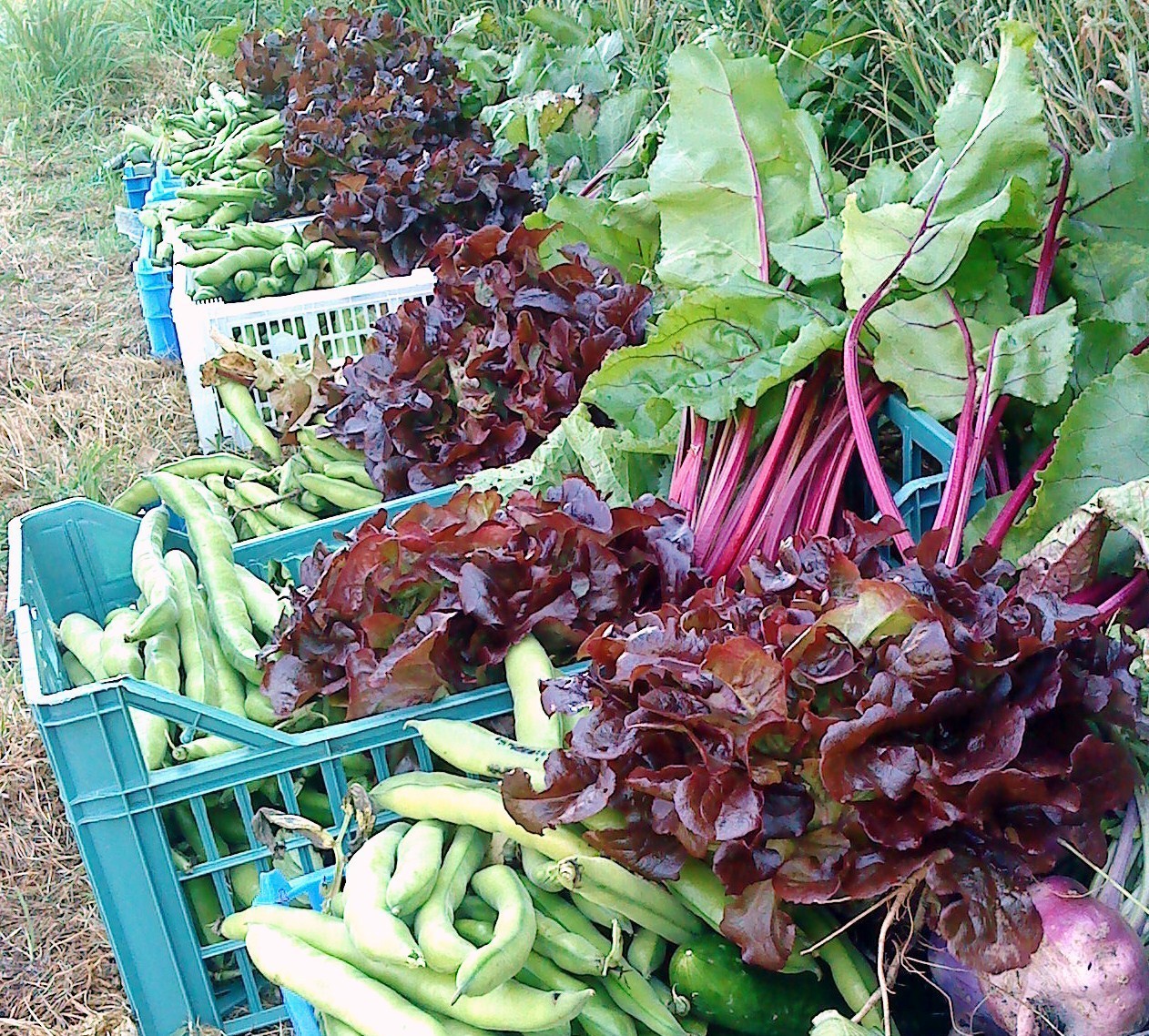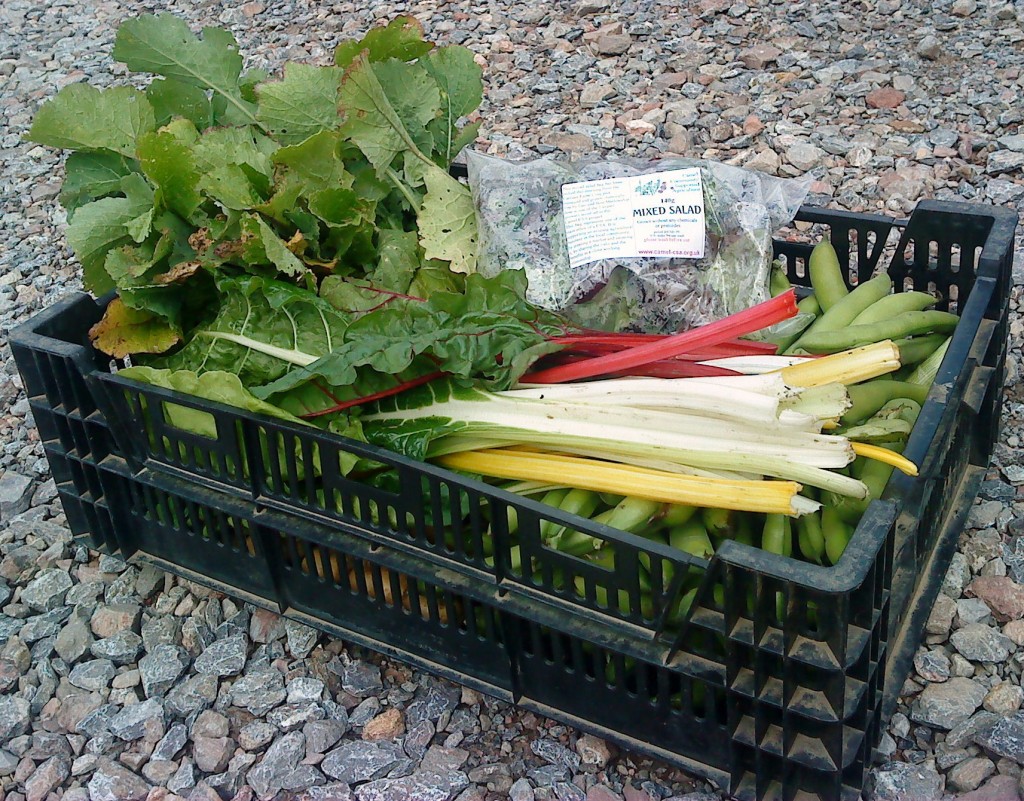Our veg boxes are well worth it

August 25, 2009
The media reports constant debates among “experts” as to the true costs and intrinsic benefits of eating organic food. Politicians have effectively copped out on this one. They advocate consumer choice and say buying organic produce should be seen as a “lifestyle” decision.
We have our own way of assessing the value at Camel Community Supported Agriculture.
Each week one of Camel CSA’s expert growers calculates the “worth” of each box size in terms of retail value. So far, both the small and standard veg boxes have been “worth” more than £5 or £8 in retail terms. The problem is, they don’t necessarily look it.
What we have to remember is that our vegetables are absolutely fresh. Our volunteers grew a significant proportion of them. We use organic principles, which means no artificial chemical fertilisers or pesticides.
They may look a little muddy at times (in spite of washing!) but they’ve suffered very few food miles. We can offer smaller, tastier veg, which carry a premium as they have scarcity value.
We can all easily be sidelined by the two-for-one offers in the supermarkets, but these will conceal a price rise somewhere else in the store and the price cut is always met by the grower – not the retailer. We can’t realistically expect to meet the own brand, so-called “Value” products either.
One of our core group members had this anecdote to tell after his family received their first veg box:
“With regard to value, when one of our children took a look at the standard £8 box this week (our first) they thought it looked like poor value, at which they were challenged to compare the cost with produce on Tesco’s website.
“Thirty minutes later, with everything weighed out and the computer consulted, they came back saying the contents would have cost over £11! So no complaints from us.”
Surpluses
Our very first boxes contained an incredibly generous amount of produce and looked wonderful as a result. Since then, we’ve had to be a bit more realistic.
Amounts will always vary from week to week depending on gluts, famines and weather conditions (but not locusts, thank goodness!)

In summer there is likely to be more to share out in terms of surpluses. During the “hungry gap” in late winter, there is likely to be less. But it will even out over 52 weeks of the year. So loyalty pays off.
Box presentation
A lot falls down to how the boxes are presented. In the initial stages of Camel CSA’s vegetable box scheme, this definitely could have done with some improvement. For some of us volunteers it’s been a steep learning curve!
The core management group has discussed at length how to make our weekly share look more attractive. For instance, we are busy sourcing shallower boxes and useful things like paper bags, string and rubber bands so we can bunch up some of the smaller veg like spring onions and parsley. But we do have to be mindful of how much time this can take and we’re reluctant to introduce wasteful packaging.
It’s worth bearing in mind that members of the well-established Stroud Community Agriculture project have to pack (but not pick) their own share – a big saving on time for the growers and volunteers.
Our expert growers, who have their own businesses to run, can’t stand over us all the time. For the moment, they are drawing up some “box presentation guidelines” to help the picking and packing team.


